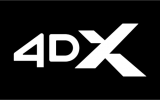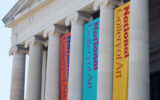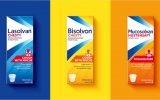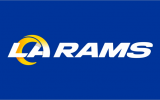Advice: How to Use Visual Image Concepts to Create Compelling Logos
As a budding designer or entrepreneur, you will almost certainly be looking to create compelling brand logos that can captivate and retain attention.
To make this less of an insurmountable task and more of an enjoyable and elucidating process, let’s discuss and dissect the power of visual image concepts in logo design. Keep reading to discover helpful insights on creating memorable logos that truly convey your brand’s essence.
Understanding the Basics of Visual Image Concepts
The journey towards creating compelling logos begins with understanding what visual image concepts are.
Essentially, these are foundational elements and principles that strong logo designs can be built upon. To grasp this, think about how various shapes, colours, and lines evoke different emotional responses in our minds, as they are a prime factor in making brand visuals memorable for customers.
For instance, certain colour combinations might make us feel calm or excited while specific shapes could suggest stability or creativity.
Your task as a designer is to harness these universally understood visual cues to communicate your intended message effectively, ensuring that each element you choose aligns perfectly with your brand narrative.
The Role of Colour and Contrast in Logo Design
Colour choice plays a prominent role in the reception of your logo by the audience. Each hue carries its own psychological weight, making us instinctively react to it. Reds capture attention and convey energy while blues promote trust, for example. Using colours wisely can evoke symbolic associations linked to your brand’s mission or values.
Meanwhile, contrast helps distinguish design elements from each other, enhancing visual clarity and professional appeal. It’s not just about choosing opposing colours on the spectrum but also playing with lightness and darkness settings within the same hue family.
To find inspiration here, don’t just look to other logos, but draw on disparate visual sources, including photography. You could even end up drawing elements of your logo’s colour scheme from snaps you’ve taken yourself. And since getting rid of photo backgrounds is a breeze with modern tools, it’s also a more accessible pursuit.
Above all, remember that effective colour choices are consistent with branding decisions across both offline and online platforms, creating harmony that further cements brand recognition.
Why Shape Matters: Exploring Symbolism in Logos
Shapes are an indispensable tool when it comes to communicating your brand story visually. Different shapes carry different meanings and evoke a range of psychological responses. For instance, circles often symbolise unity and loyalty, squares suggest stability and reliability while triangles can convey direction or progression.
If we consider global brands such as Apple or Mercedes-Benz, we’ll see how shapes play into their branding strategy. The apple with a bite taken out is an instantly recognisable symbol globally implying knowledge and innovation, whereas the Mercedes’ three pointed star logo represents domination over land, sea and air markets thus emphasising its scope of operations.
Mastering shape symbolism can help you craft logos that subtly communicate key aspects about your brand while resonating with target audiences emotionally.
Using Typography to Enhance Your Brand Identity
Typography choice is fundamentally important in effectively communicating your brand identity. The fonts you select can reflect the character of your organisation and help convey its core values to your target audience.
Coca-Cola, for example, employs a custom script typeface that complements their playful and nostalgic branding, while Facebook’s simplified sans-serif typography promotes ease of use and accessibility, even if its corporate logo is different. Both carefully chosen typographic styles have become iconic facets of each respective brands’ visual identities over time.
The key takeaway here: choosing fonts should never be arbitrary or merely aesthetic-based. By understanding how different typefaces invoke particular feelings, from the elegance of serif fonts to the modernity of sans-serifs or the friendliness of handwritten script, you’ll successfully integrate typography into your logo as a potent tool for expression.
Incorporating Balance and Symmetry for Timeless Logo Appeal
A balanced, symmetrical logo often leads to a visually appealing design. The audience perceives such designs as stable, harmonious, and easy on the eyes.
Look at logos like McDonald’s golden arches or Adidas’ three stripes. Their simplicity is appealing in its own right but it’s the careful execution of balance that truly makes them so engaging. Each side mirrors the other, creating an innate feeling of equilibrium which we humans naturally find very soothing.
Therein lies another lesson, which is that successful logos don’t have to be complex. Straightforward layouts with symmetry can effectively catch viewers’ attention too.
Less is More: The Power of Minimalism in Compelling Logos
There’s an undeniable elegance to minimalist logo design. The potential impact of a well-executed simple logo can be enormous, particularly for establishing a clean and modern brand image.
Nike’s swoosh is a textbook example of minimalism at work. It utilizes the bare minimum, with no words, just straight-to-the-point visuals. Other brands have even dropped their names from logos in the pursuit of minimalism, with MasterCard being a recent example of this. Yet these logos effectively communicate their respective companies’ innovative dynamism without overwhelming or distracting viewers with unnecessary details.
It’s evidence that sometimes less truly is more! A minimalist approach focuses on simplicity and clarity rather than intricate designs that may confuse your audience. This reinforces rapid recognition, making it highly effective especially if your goal is instant brand recall.
Wrapping Up
All this is to say that visual image concepts, whatever form they take, can be the foundation of good logo design. And moreover, newcomers can leverage these tips to get great results, no matter their starting point or ultimate goals.








